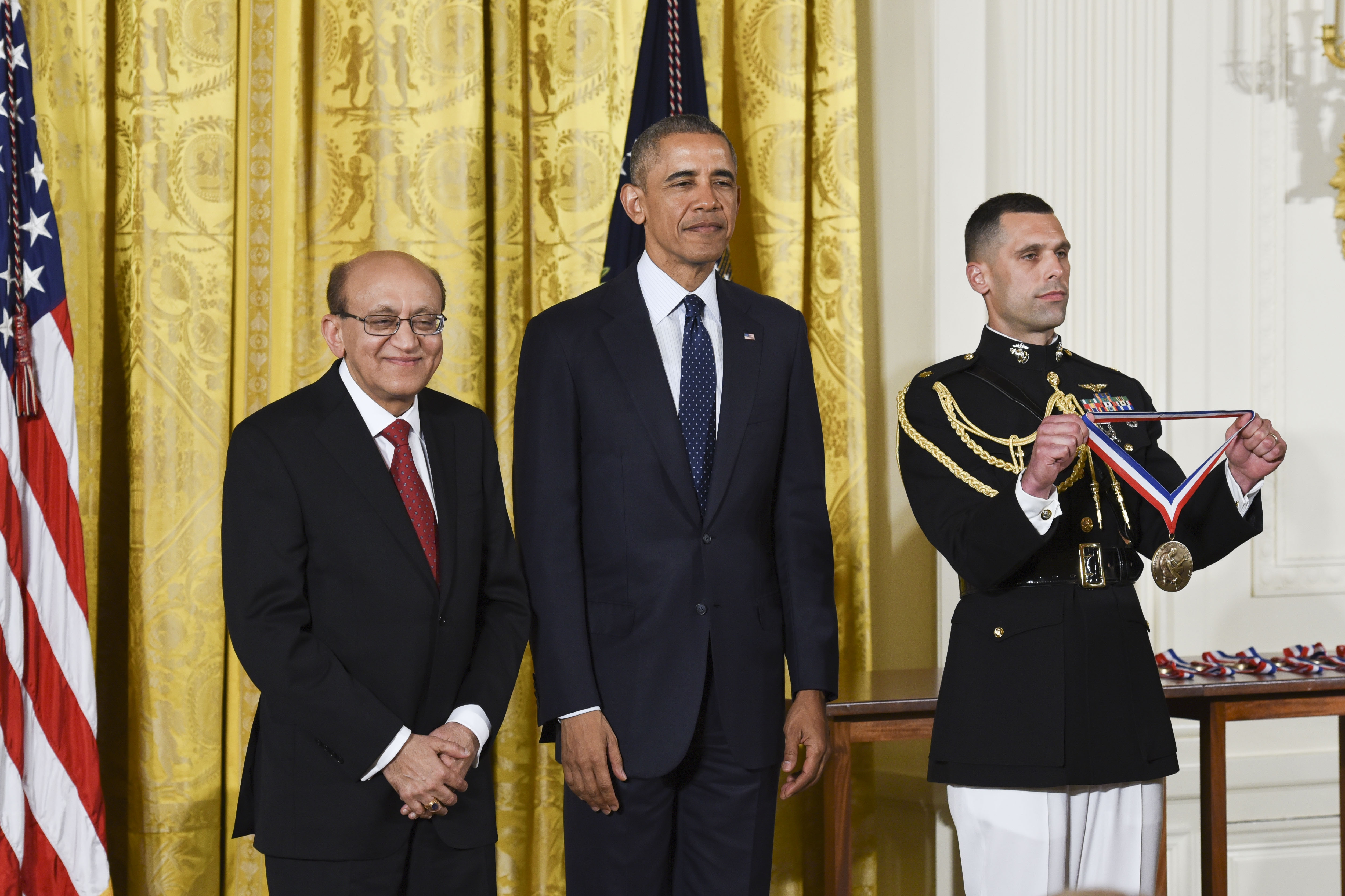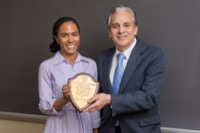
NSF Career Award
UD developmental biologist Jia Song recognized by National Science Foundation
9:58 a.m., April 14, 2016--Look through a microscope in developmental biologist Jia Song’s lab at the University of Delaware, and she’ll show you a transparent sea urchin egg that’s just been fertilized.
Now, she says, imagine what will happen next, as that single cell divides over and over again, quickly becoming a multicellular embryo and eventually a full-size adult just like the spiny purple creatures clinging to the glass walls of the aquariums in her lab.
Honors Stories
National Medal of Science
Warren Award
As any embryo develops, its cells differentiate to form various body parts, such as its heart, skeleton, gut and nervous system.
“How does that embryo know how to form certain structures?” Song asks. “That’s what I focus on — how cells integrate signals to know how to develop and what to become.”
Song, assistant professor of biological sciences, has received a five-year, $559,500 National Science Foundation (NSF) Faculty Early Career Development Award to support her research. The highly competitive award is one of the most prestigious available to young scientists, designated for what the NSF says are “those teacher-scholars who most effectively integrate research and education within the context of the mission of their organization.”
Song’s research examines the question of how genes are regulated in the very early stages of development. The key element she studies is microRNAs, or very small RNA (ribonucleic acid) molecules, which modulate the expression of hundreds of genes that are involved in a broad range of biological processes including cell differentiation.
“MicroRNAs are fine-tuners,” Song says. “In most cases, they modulate many, many processes to make sure that the embryo develops properly.”
In her lab at UD, she investigates how microRNAs that are found in many species, including humans as well as sea urchins, regulate developmental pathways. After injecting microRNA inhibitors into a newly fertilized sea urchin egg, Song and her team then track the embryo’s response.
“The effects of microRNAs are important,” she says. “The sea urchin has one of the best described gene regulatory networks, so I’m making use of that to find out how microRNAs regulate this network to power development.”
Sea urchins also have only a few cell types, so researchers can more easily study the different developmental pathways. The spiny invertebrates are particularly useful for Song’s research because each one can provide millions of eggs or sperm. Song obtains the sea urchins from divers who collect them off the California coast, and they live in saltwater tanks in her lab.
Song says her focus is on fundamental processes involved in animal development, but her work on the regulation of genes is a key to better understanding many human conditions including birth defects and diseases such as cancer.
“Some of the fundamental processes of development I’m looking at contribute to our understanding of what happens when human embryonic normal development goes wrong,” she says.
Outreach to children, teachers, parents
The project supported by the NSF Career Award also includes an educational outreach component to develop inexpensive, handheld microscopes that young children can use.
The microscopes can be made by teachers or parents using clear plastic platforms, similar to the kind of stand on which shoes might be displayed in a store, with a magnifying lens glued onto the stand. Then, by placing a cell phone camera over the lens, the device lets children take a magnified look at drops of rainwater, leaves, soil or whatever piques their curiosity.
The goal, Song said, is to place inexpensive microscopes in the hands of parents and future teachers to foster their use in homes and classrooms. Song and her students will participate in public outreach activities at the Delaware Children’s Museum.
Song will also work with Jennifer Gallo-Fox, assistant professor of human development and family studies. Gallo-Fox’s students, who are future teachers, will use the project as a way to add more hands-on activities for young students in their elementary science classes.
“It’s a fantastic collaboration because it also helps build confidence in future teachers about teaching science,” Song says. “These microscopes are mobile and easy to use, and if they break, they break — they’re not expensive. Once teachers and parents have them in their hands, they’re much more likely to have their children use them.”
Because she relies on microscopes in her own research, the idea of bringing a simple form of the instrument to youngsters is a natural fit, Song says. Her goal is to inspire them to continue an interest in science.
“This is what happens when you magnify things,” she tells children. “It shows you a world you’ve never seen.”
Article by Ann Manser
Photo by Kathy F. Atkinson








